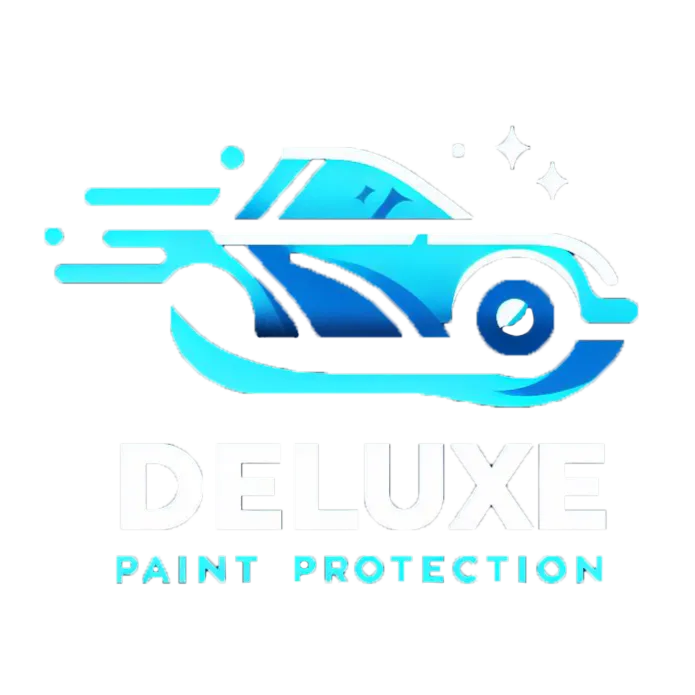
Why North Virginia Drivers Should Consider Ceramic Coatings for Durability
When it comes to keeping your car looking good, nothing is more important than the condition of the car's paint. Whether you’re driving through Chantilly, VA or cruising the roads of Northern VA, protecting your car’s paint from the elements is key. One of the coolest and most effective ways to do that is with ceramic coating.
In this post we’ll get into why ceramic coatings are becoming popular for Northern VA drivers, how they work, the benefits and if it’s worth it. If you’re a car nut, have a brand new car or just want to keep your car’s surface looking perfect for years to come, then this post is for you!
What is Ceramic Coating?
A ceramic coating is a high-performance liquid polymer that’s applied to the exterior of a vehicle, it provides an additional protective layer over the clear coat, enhancing its durability and preventing damage to the paint from external elements. Unlike traditional wax or paint protection films, a ceramic coating chemically bonds with your vehicle’s factory paint to form a long-lasting, protective layer. This bond creates a durable, hydrophobic surface that acts as a powerful shield against a wide range of environmental contaminants.
Once applied correctly, the ceramic coating forms a hard, glass-like surface that repels water, dirt, bird droppings, brake dust, tree sap, and even harmful UV rays from direct sunlight. The hydrophobic effect means that water beads up and rolls off the surface, taking contaminants along with it. This not only makes the vehicle easier to clean but also helps prevent water spots and mineral deposits from forming on the paint.
Think of it as an invisible barrier that adds a layer of defence against the daily wear and tear that your vehicle’s paint job would normally endure. Whether it’s exposure to harsh weather conditions, road debris, or the everyday contaminants that accumulate on the surface, a ceramic coating provides enhanced protection that lasts far longer than traditional waxing. It bonds directly to the paint surface on a molecular level, creating a stronger, more durable finish that offers superior protection compared to other methods like paint protection films. This gives your vehicle an extra layer of defence while also enhancing its visual appeal by providing a high-gloss finish.
In essence, a ceramic coating transforms the surface of your car, making it more resilient, easier to maintain, and better equipped to resist the environmental factors that can damage your car’s appearance over time.

How Does Ceramic Coating Work?
A ceramic coating application works by creating a chemical bond between the coating and your car’s paint surface. This bond forms a protective layer that’s highly resistant to contaminants, often referred to as a ceramic coat. Essentially the liquid polymer fills in the microscopic pores and imperfections on the car’s surface and creates a smooth and glossy finish. The ceramic coating is applied as a liquid, and then cured using heat or UV.
The key feature of a ceramic coating is its hydrophobic effect. This is what makes it so valuable. The water beads up and rolls off the surface, preventing water spots which is especially useful in areas like Northern VA where the weather can go from harsh winters with road salt and grime to humid summers with frequent rain.
Plus ceramic coatings offer UV protection. UV rays can oxidize and fade the paint over time but with a ceramic coating the paint gets an extra layer of protection against the elements. This added protection helps maintain the color integrity and appearance of your vehicle’s exterior and keeps it looking new for much longer.

Is Ceramic Coating Worth It in Northern VA?
For Northern VA drivers ceramic coating is definitely worth it for several reasons. The area is known for its crazy weather and the elements can be harsh. From intense UV in the summer to snow, slush, and salt in the winter, these can damage a car's paint job if left unprotected. A ceramic coating can result in easier car care and has several benefits that are perfect for vehicles that are exposed to these types of conditions.
Road Salt and Winter Protection: Northern VA winters can be brutal on vehicles. Road salt to melt ice and snow can cause corrosion, rust, and stains on your car’s paint. A ceramic coating forms a barrier that prevents the salt from touching the paint surface and reduces the risk of damage.
UV Protection: The UV rays from the sun can cause significant damage to a vehicle’s paint job, oxidation, fading, and discoloration over time. Ceramic coatings protect from harsh UV light and keep your vehicle’s paint looking new even in the hot summer months.
Long Term Protection: Once applied, a ceramic coating can last months or even years depending on the product and how well it’s maintained. This long-term protection will save you money in the long run as you won’t need to wax or repaint as often.
Easier Car Care: With a ceramic coating, daily washing becomes much easier. The coating prevents dirt, grime, and other contaminants from sticking to the surface so you don’t have to scrub as hard during a car wash. In fact, a simple rinse can often do the trick to keep your vehicle looking clean.

Benefits of Ceramic Coating for Your Vehicle's Paint
When it comes to protecting your vehicle paint, a ceramic coating offers many benefits such as - creating a durable protective layer, improving the overall appearance, facilitating easier vehicle maintenance and so forth. Below are some of the key benefits you can expect from a ceramic coating application:
Ultimate Protection Against Environmental Hazards: Ceramic coatings act as a powerful defense against a range of contaminants such as bird droppings, road salt, brake dust, and even stone chips. This protective layer prevents these contaminants from adhering directly to the paint, reducing the risk of damage and corrosion. The coating also shields your car from chemical stains and chemical etching, which can permanently harm the paint over time.
Hydrophobic Properties for Easy Cleaning: One of the standout features of a ceramic coating is its hydrophobic effect. The coating makes the surface of your vehicle highly resistant to water, causing it to bead and roll off instead of sticking to the paint. This means fewer water spots and less grime buildup, making it much easier to clean your vehicle after exposure to rain or dirt.
Enhanced Gloss and Shine: Ceramic coatings add a high gloss finish to your car, elevating the appearance of its paint job. The coating fills in microscopic imperfections, creating a smooth and reflective surface that enhances the color depth and shine. Whether your car is brand new or a few years old, a ceramic coating can restore its look and give it that showroom shine.
Protection Against Scratches and Swirl Marks: The hard layer that forms with a ceramic coating helps reduce the risk of minor scratches and swirl marks. While it doesn’t make the vehicle completely impervious to damage, it does add an extra layer of defense that makes your car’s surface more resistant to everyday wear and tear from washing, dust, and debris.
Reduced Maintenance and Easier Care: Once the ceramic coating is applied, your vehicle’s surface becomes far easier to maintain. You won’t need to wax your car regularly, and routine car washes become quicker and more efficient. The protective layer prevents contaminants from bonding with the paint, so you spend less time scrubbing and more time enjoying your vehicle. Regular maintenance can often be as simple as wiping down your car with a microfiber cloth or microfiber towels to keep it looking clean.

How Is Ceramic Coating Applied?
Applying a ceramic coating to your vehicle requires careful preparation and attention to detail. It contains many steps such as cleaning and preparing before you can even begin to apply the ceramic coating. Follow these steps to ensure a successful application and long-lasting protection for your car’s paint surface.
Clean the Paint Surface: Start with a thorough cleaning to remove all dirt, grime, and contaminants from the paint surface. Use a high-quality car wash soap and microfiber cloths to avoid scratching the paint. A clean surface is crucial for the ceramic coating to bond properly.
Prepare the Paint Surface: After cleaning, inspect the paint for any imperfections, such as scratches or swirl marks. Use a paint correction process, like polishing or wet sanding, to address these issues. This step ensures a smooth, flawless surface for the ceramic coating to adhere to.
Apply the Ceramic Coating: Using a clean, lint-free applicator, apply the ceramic coating to the paint surface in small sections. Follow the manufacturer’s instructions for the specific ceramic coating product you’re using. Ensure even coverage and avoid applying too much product at once.
Allow the Coating to Cure: After application, allow the ceramic coating to cure for the recommended amount of time. This can range from several hours to overnight, depending on the product. Curing is essential for the coating to form a strong, durable bond with the paint surface.
Inspect and Maintain the Coating: Regularly inspect the ceramic coating to ensure it remains in good condition. Maintain the protective layer by washing your vehicle with a gentle car wash soap and using microfiber towels to avoid scratching the surface. Periodic maintenance will help extend the life of the coating and keep your car looking its best.
While it’s possible to apply ceramic coating yourself, professional application is often recommended to ensure the best results. Professionals have the expertise and tools to prepare the paint surface properly and apply the coating evenly, maximizing its protective benefits.
By following these steps, you can enjoy the long-lasting protection and enhanced appearance that ceramic coatings offer for your vehicle’s paint job.
Are There Any Downsides to Ceramic Coating?
While the benefits of a protective coating like ceramic coating are numerous, it’s important for North Virginia drivers to weigh them against the potential drawbacks before deciding if it’s the right choice for their vehicle’s paint job, they have a high initial cost, require proper and professional application and regular maintenance. Ceramic coatings offer excellent protection and enhance the appearance of your car, but they come with considerations that every car owner should understand.
Below, we explore some of the key downsides to keep in mind when deciding if this ceramic coating product is worth it for your vehicle’s exterior.
High Initial Cost: One of the most significant drawbacks of ceramic coating services is the initial cost. The application of a high-quality ceramic coating is often more expensive than traditional methods like waxing or applying a paint protection film. Professional ceramic coating application can also add to the overall price, as it requires expertise to ensure a proper chemical bond with your vehicle’s paint surface. Although the long-lasting protection and superb protection against contaminants like bird droppings, brake dust, and road salt can make this an investment worth considering, the upfront cost may not fit every budget. For those with a new car or a brand new vehicle, however, this ceramic coating solution can provide a long-term benefit, especially in areas like North Virginia where harsh weather and environmental hazards can take a toll on the car’s paint.
Not a Cure-All for Paint Protection: While a ceramic coating offers excellent protection, it’s important to understand that it’s not invincible. The protective layer it forms on your vehicle’s paint is highly resistant to many types of contaminants, such as UV rays, water spots, and minor scratches, but it does not make the paint completely impervious to damage. For example, stone chips, rock chips, and deep scratches from road debris or accidents can still affect the car’s surface. Ceramic coatings provide added protection, but they aren’t a complete substitute for more heavy-duty protective methods like clear bras or paint protection film. Even though the coating helps resist chemical etching and chemical stains, it’s still crucial for car enthusiasts and everyday drivers alike to exercise care and avoid unnecessary risks like wet sanding or prolonged exposure to harmful UV light.
Requires Proper Application and Preparation: The effectiveness of a ceramic coating application heavily depends on the careful preparation of the vehicle’s exterior. For the coating to properly bond with the paint surface, it is essential that the vehicle undergoes a thorough cleaning to remove all dirt, grime, and contaminants. Any imperfections on the car’s paint should be addressed beforehand to ensure the best possible results. For instance, if your vehicle has stain marks or swirl marks, these should be corrected through methods like polishing or even wet sanding before applying the coating. If the surface is not meticulously prepped, the coating may not adhere properly, leading to uneven coverage and reduced effectiveness. This is why professional ceramic coating services are often recommended to ensure that the coating bonds chemically with the paint for maximum durability and complete protection.
Periodic Maintenance and Reapplication: While a ceramic coating offers long-lasting protection, it is not a permanent solution. Over time, the coating may lose its hydrophobic properties, and its ability to repel contaminants like water spots or road debris may diminish. Depending on factors such as the type of ceramic coating product used and how well it’s maintained, you may need to reapply the coating every couple of years to maintain its full effectiveness. Regular car maintenance can help, such as washing your vehicle with a microfiber cloth or using microfiber towels to avoid scratching the surface. However, ceramic coatings are not a substitute for regular care. While the ceramic coating offers added protection against things like brake dust or bird droppings, it still requires attention to ensure the vehicle stays in the best condition. Additionally, the coating application process itself can sometimes require recoating or periodic touch-ups to restore the high gloss finish and hydrophobic properties.

Conclusion
If you’re a North Virginia driver looking for a way to keep your vehicle’s paint in top shape in this harsh weather, ceramic coatings is the answer. The protective layer they provide shields your vehicle from many environmental threats like UV rays, road salt, brake dust and more. Plus, the benefits of a ceramic coating—high gloss finish, longer durability and easier maintenance—make it a worthwhile investment for any car enthusiast or vehicle owner.
While the upfront cost of ceramic coating services is a consideration, the long-term benefits of ultimate protection and flawless finish are worth it for many. If you’re ready to take your vehicle to the next level, contact a reputable professional for ceramic coating solutions.
Ceramic coatings can also be applied to interior surfaces such as vinyl and leather, enhancing their durability and resistance to stains. Whether your car is brand new or several years old, ceramic coating can provide the maximum protection your vehicle’s paint deserves.





